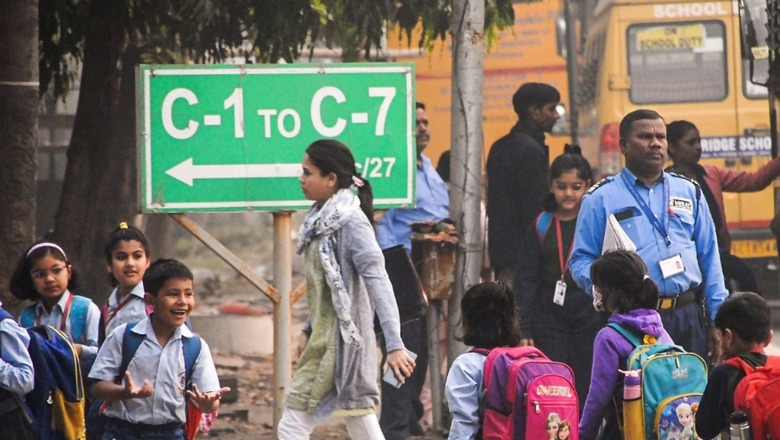
views
One third of five-year-old children across the country continue to be in classes lower than grade 1 of primary school, the Annual Status of Education Report (ASER), 2022 has pointed out.
Major national policy documents – the Right to Education Act (2009), the Early Childhood Care and Education policy (2013) and the National Education Policy (2020) all reiterate that children should enter class 1 of a primary school at the age of six.
However, on the ground, institutional guidelines for what five-year-olds can do vary both by state as well as by the type of institution, the crucial report has noted.
The overall proportion of five-year-olds enrolled in primary school — government or private — has hardly changed between 2018 and 2022, it said.
Read | Proportion of Govt Schools with Less Than 60 Students Increased Every Year in Last Decade: ASER 2022
”For example, Integrated Child Development Scheme (ICDS) Anganwadis offer pre-school education to children in the three-six age group, while many state governments allow children to enter class one at the age of five.
”These ambiguities have resulted in five-year-old children being enrolled in many different forms and levels of the educational provision,” the report said.
ASER is a nationwide, citizen-led household survey that provides a snapshot of children’s schooling and learning in rural India.
The first ASER survey was conducted in 2005 and repeated annually for 10 years.
ASER 2022 is the first field-based ”basic” survey after a gap of four years. It also comes at a time when children are back in school after an extended period of school closure in view of the COVID-19 pandemic.
The latest study has surveyed a total of 19,060 villages in rural India which include 3,74,544 households and 6,99,597 children in the age group 3 to 16 years.
”In 2018, at the all India level, about eight per cent of five-year-olds were not enrolled anywhere. Of those who were enrolled, roughly equal proportions were enrolled in AWCs, in private LKG pr UKG classes, and in (government or private) primary schools,” it said.
In 2022, some trends among these five-year-old children are similar to those observed among the three and four-year-olds, it said.
First, the proportion of children out of school decreased substantially over 2018 levels (from 8 to 5.5 pc).
”Second, among enrolled five-year-olds, there is a clear shift from private to government pre-schools and schools. However, despite national policy prescriptions, the overall proportion of five-year-olds enrolled in primary school (government or private) has hardly changed between 2018 and 2022. Both then and now, approximately 1 in every 3 children age 5 is enrolled in primary school.
”Further, unlike many other indicators, this national level finding does not fluctuate much across individual states. States such as Rajasthan and Tamil Nadu, which had very high proportions of five-year-olds enrolled in school in 2018, have similar levels in 2022; whereas states with few five-year-olds in school in 2018, such as Karnataka and Maharashtra, still show the same pattern four years later,” it said.
The report noted that major challenge confronts the ICDS Anganwadi Centres.
Data from the Ministry of Women and Child Development shows that the number of centres has grown year-on-year from 2016-17 to 2021-22, standing at close to 1.4 million centres across the country in June 2022.
”According to these statistics, despite the increasing number of such institutions across the country, the number of three-six-year-old children enrolled in pre-school education showed a steady decline across the same period.
”However, since these statistics are not disaggregated by urban/rural location, it is not possible to compare them with enrolment figures from ASER (which reflect only rural populations),” it said.
Read all the Latest Education News here


















Comments
0 comment